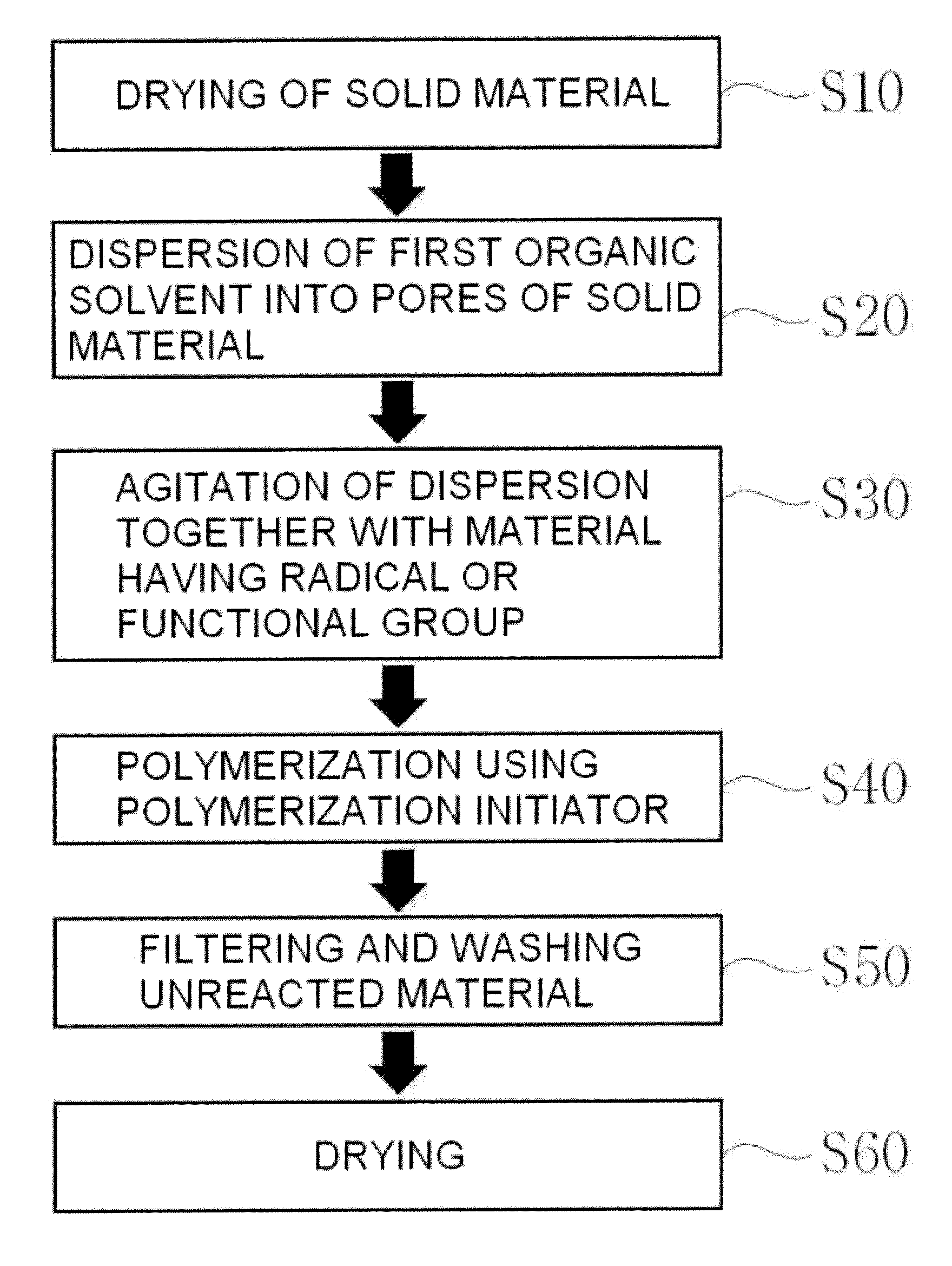Preparation of meso-porous polymer based nano-polymerized composite material
a technology of mesoporous polymer and composite material, which is applied in the direction of packaging foodstuffs, other chemical processes, separation processes, etc., can solve the problems of high equipment cost, high processing temperature, and large energy consumption of carbon dioxide solution separation,
- Summary
- Abstract
- Description
- Claims
- Application Information
AI Technical Summary
Benefits of technology
Problems solved by technology
Method used
Image
Examples
example 1
Preparation of Meso-Porous Carbon Thiophene Polymer (Thiophene Meso-Porous Carbon)
[0083]1 g of meso-porous carbon (CMK-3) with a specific surface area of 1,099 m2 / g, a fine pore volume of 1.073 m3 / g and a fine pore diameter of 4.84nm was placed in a reactor at ambient pressure and dried at ambient temperature and ambient pressure.
[0084]Then, 25 cc of acetonitrile [Aldrich Chemical, US] was added to the dried meso-porous carbon, followed by admixing the same using an ultrasonicator for 15 minutes, to uniformly disperse acetonitrile in pores of meso-porous carbon. Following this, 0.5 g of thiophene was added to the dispersion and the mixture was maintained under vacuum at an absolute pressure of 30 kpa for 3 minutes, followed by ultrasonication at ambient pressure for 15 minutes and then mechanical agitation for 15 minutes, respectively, so as to prepare a homogeneous dispersion.
[0085]Next, 4 g of ferric trichloride [Aldrich Chemical, US] was added to the foregoing dispersion and the ...
example 2
Preparation of Meso-Porous Silica Thiophene Polymer (Thiophene, Meso-Porous Silica KIT-6)
[0088]A desired material was obtained by the same procedures as described in Example 1 except that the meso-porous carbon was replaced with meso-porous silica KIT-6.
example 3
Preparation of Meso-Porous Silica Thiophene Polymer (Thiophene, Meso-Porous Silica MCM-41)
[0089]A desired material was obtained by the same procedures as described in Example 1 except that the meso-porous carbon was replaced with meso-porous silica MCM-41.
PUM
| Property | Measurement | Unit |
|---|---|---|
| surface temperature | aaaaa | aaaaa |
| temperature | aaaaa | aaaaa |
| temperature | aaaaa | aaaaa |
Abstract
Description
Claims
Application Information
 Login to View More
Login to View More - R&D
- Intellectual Property
- Life Sciences
- Materials
- Tech Scout
- Unparalleled Data Quality
- Higher Quality Content
- 60% Fewer Hallucinations
Browse by: Latest US Patents, China's latest patents, Technical Efficacy Thesaurus, Application Domain, Technology Topic, Popular Technical Reports.
© 2025 PatSnap. All rights reserved.Legal|Privacy policy|Modern Slavery Act Transparency Statement|Sitemap|About US| Contact US: help@patsnap.com



